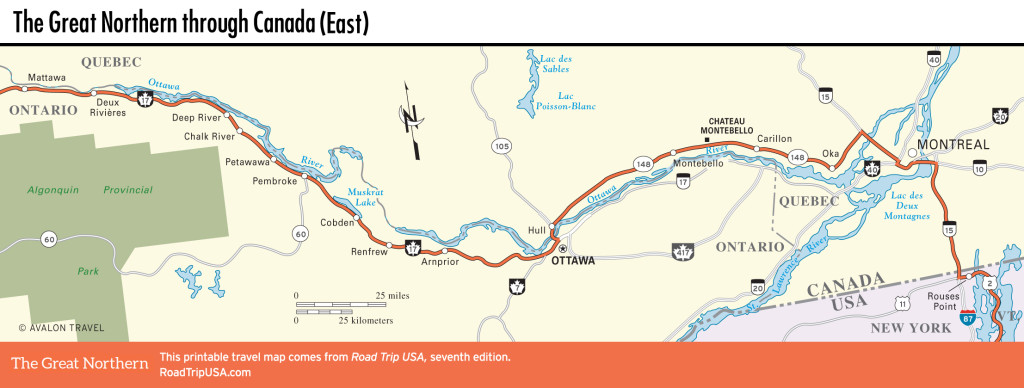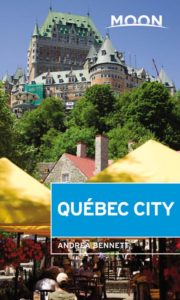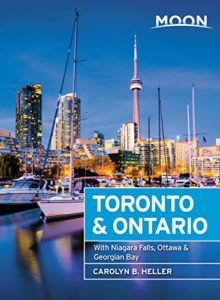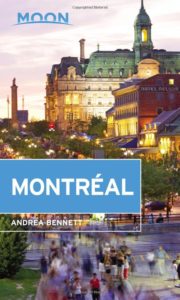Montreal
Driving Across Montreal
Montreal is as scythed by freeways as any U.S. city, and it helps to be prepared to deal with the sudden shift from quiet countryside to confusing urban madness. If you’ve followed the rural route across Quebec from Ottawa, you enter the city from the northwest, on the Hwy-640 Autoroute; the freeway route from Ottawa brings you in on the Hwy-40 Autoroute, straight into downtown.
Any east-west freeway you find yourself on will cross the Hwy-15 Autoroute, the main route between Montreal and the U.S. border. Vermont is a quick 40 mi (63 km) south of Montreal; after crossing the U.S. border, take the second exit off the I-87 freeway and head east along US-11/US-2 to Rouses Point, New York, at the north end of Lake Champlain, to rejoin our two-lane road trip route. Between Vermont and the Canadian border, US-2 nips briefly and uneventfully across the northeast corner of New York State, crossing the international border on the I-87 freeway between the United States and Quebec.
Montreal
Located on an island in the St. Lawrence River, and first settled as a frontier outpost by fur-trapping French voyageurs, Montreal (pop. 1,780,000) has grown into Canada’s second-largest city, and today is easily the most European city in North America, with the largest French-speaking population outside La France. Hotbed of the separatist movement, Montreal tolerates the polyglot federalism of Canada, but the accent here is most definitely on the “French” in French-Canadian; in a wide variety of gourmet restaurants, stylish boutiques, nightclubs, museums, and theaters, you can half-close your eyes and pretend you’re in Paris.
The city takes its name from a more than 700-ft-high (213-m) hill, now the pleasant tree-covered Mount Royal Park just north of downtown. Planned by Frederick Law Olmsted and opened in 1876, the park’s stairs and paths lead up to a belvedere, from which you have a sweeping view of the city, the St. Lawrence River, the southern suburbs, and, on the eastern slope, a huge steel cross that’s lit up at night.
At the foot of Mount Royal Park runs Sherbrooke Street, Montreal’s most prestigious and majestic street, lined with grand 1920s buildings as impressive as any on Park Avenue. Among the many posh boutiques (Chanel, Armani, et al.) and luxury hotels (like the Ritz-Carlton, where Richard Burton married Elizabeth Taylor), you’ll find the Montreal Museum of Fine Arts (1380 Sherbrooke St., 514/285-2000 or 800/899-6873, daily, $24 for permanent displays, $15-23 for exhibitions). The oldest museum in Canada, and one of the finest in the world, the Museum of Fine Arts has a large permanent collection of European, Canadian, and American art as well as an extensive display of Inuit artifacts. A half-mile (0.8 km) east, the McCord Museum (690 Sherbrooke St. W., 514/398-7100 or 514/861-6701, daily summer, Tues.-Sun. winter, C$19) has a wonderful collection of art and artifacts related to Montreal, Quebec, and Canada—everything from Victorian evening gowns to First Nation masks and carvings. South of the Museum of Fine Arts, the elegantly modern Canadian Centre for Architecture (1920 Rue Baile, 514/939-7000, Wed.-Sun., C$10) mounts fascinating shows devoted to the built environment.
About a mile (1.6 km) southeast of Mount Royal, just off the riverfront, the two-block-long cobblestone square of Place Jacques-Cartier is the heart of Old Montreal, a picturesque neighborhood that was the site of the earliest European settlement. In the summer the square is transformed into an open-air market, and all year round you can sample the area’s excellent cafés and restaurants.
Where to Eat and Stay in Montreal
Montreal’s Pierre Elliot Trudeau airport lies 11 mi (18 km) west of downtown. Numerous freeways crisscross Montreal, and driving around is pretty easy (though all signs, including the complicated parking rules, are in French), but if you want to escape from your car for a day or two, the city is eminently walkable.
For food, Montreal has something for everyone, thanks to the city’s truly international population—sizable immigrant communities make Montreal a dining adventure. At lunchtime, workers from the Montreal financial district cram into Chez Delmo (275 Notre Dame St. W., 514/288-4288), a contemporary version of traditional Old Montreal seafood restaurants, where dishes are always fresh. There’s a nice oyster bar too. You must eat French at least once while in Montreal, and French restaurants do not come more traditional. Another reliable bet is L’Express (3927 St. Denis St., 514/845-5333), east of Mount Royal Park, open from breakfast until after midnight.
One unexpected Montreal specialty is the deli sandwich, brought here by Jewish immigrants. This version is usually built of slices of rye bread around a classic version of Montreal’s beloved “smoked meat,” a.k.a. corned beef. Many of the great old delis have gone out of business; one survivor (since 1928!) is Schwartz’s Charcuterie Hebraique (3895 St. Laurent Blvd., 514/842-4813), which is slightly touristy but serves some of the finest pastrami on the planet.
The best budget place to stay is the large HI-Montreal (1030 Mackay St., 514/843-3317, C$31 and up), which has dorm beds and private rooms a 30-minute walk south of Mount Royal Park. For something a bit more special, Château Versailles (1659 Sherbrooke St. W., 514/933-3611 or 888/933-8111, C$149 and up) is composed of four Victorian townhouses converted into one charming antiques-filled hotel.
Travel Map of the Great Northern Through Canada

















